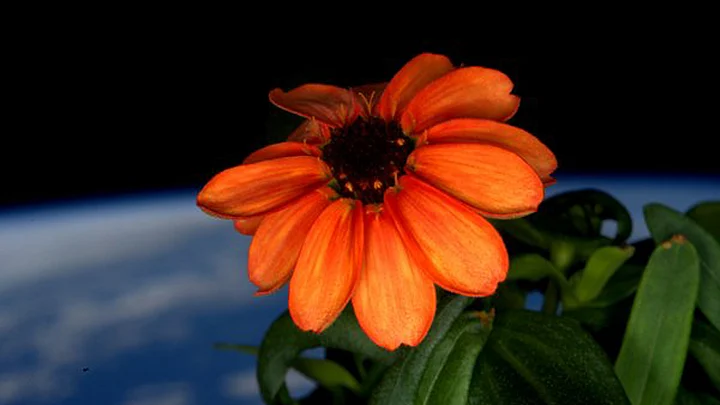Science is blooming stronger than ever. NASA astronaut Scott Kelly recently tweeted pictures of the space flower grown under NASA’s project Veggie.
The Veggie plant growth facility was installed on the orbiting laboratory in early May of 2014, and the first crop – ‘Outredgrous’ red romaine lettuce – was activated for growth. The first growth-cycle faced some issues.
The second crop of the same lettuce was activated in early July by Kelly, the leafy greens grew according to schedule. This time the crew was able to eat the lettuce when it was ready to be harvested a month later.
The next crop on the docket was a batch of zinnia flowers, but they weren’t selected for their beauty. They were chosen because they can help scientists understand how plants flower and grow in microgravity.
Within two weeks, the plants started facing issues due to molds growing up on the leaves. In late December, Kelly found that the plants “weren’t looking too good,” and tweeted about his concerns.
Station Commander Scott Kelly was making an obvious reference to Mark Watney, the fictional hero of the Oscar-nominated sci-fi film The Martian, based on Andy Weir’s book by the same name. In the film, as in the book, Watney — a NASA botanist who is accidentally stranded on Mars, tries growing potatoes and ’creates’ water for them by using fire to burn oxygen and hydrogen.
Andy Weir’s witty remark added the much needed humour to Kelly, who holds the record for the longest spaceflight by an American.
Shortly after Kelly decided to junk the guide manuals and become an autonomous gardener, two of his plants started making progress.
Finally on 16th January, Kelly posted photographs of the first every flower grown in space.
In the film The Martian, Mark Watney famously says: They say once you grow crops somewhere, you have officially colonised it!” Now Scott Kelly and Kjell Lindgren can claim they have colonised space!
(At The Quint, we question everything. Play an active role in shaping our journalism by becoming a member today.)
